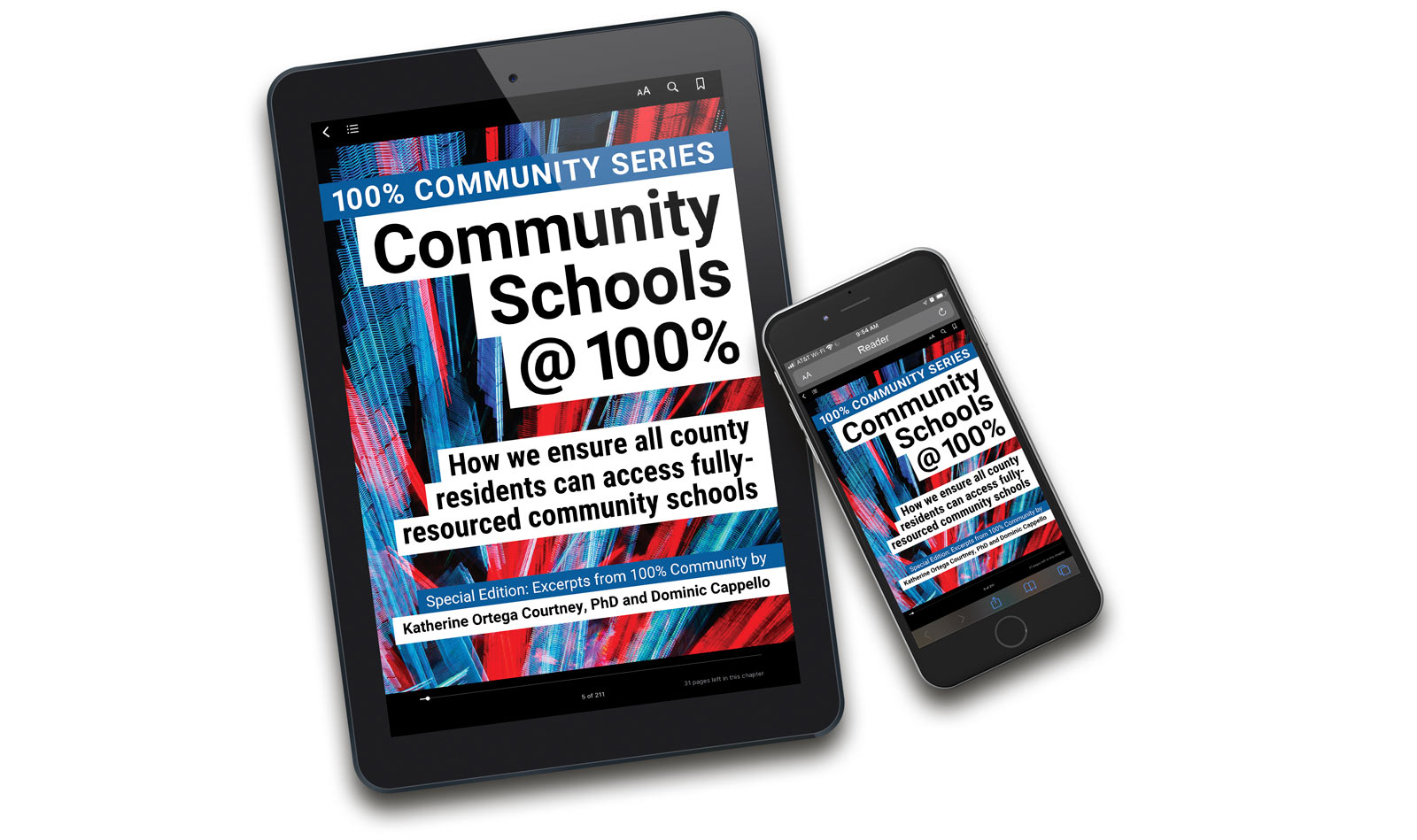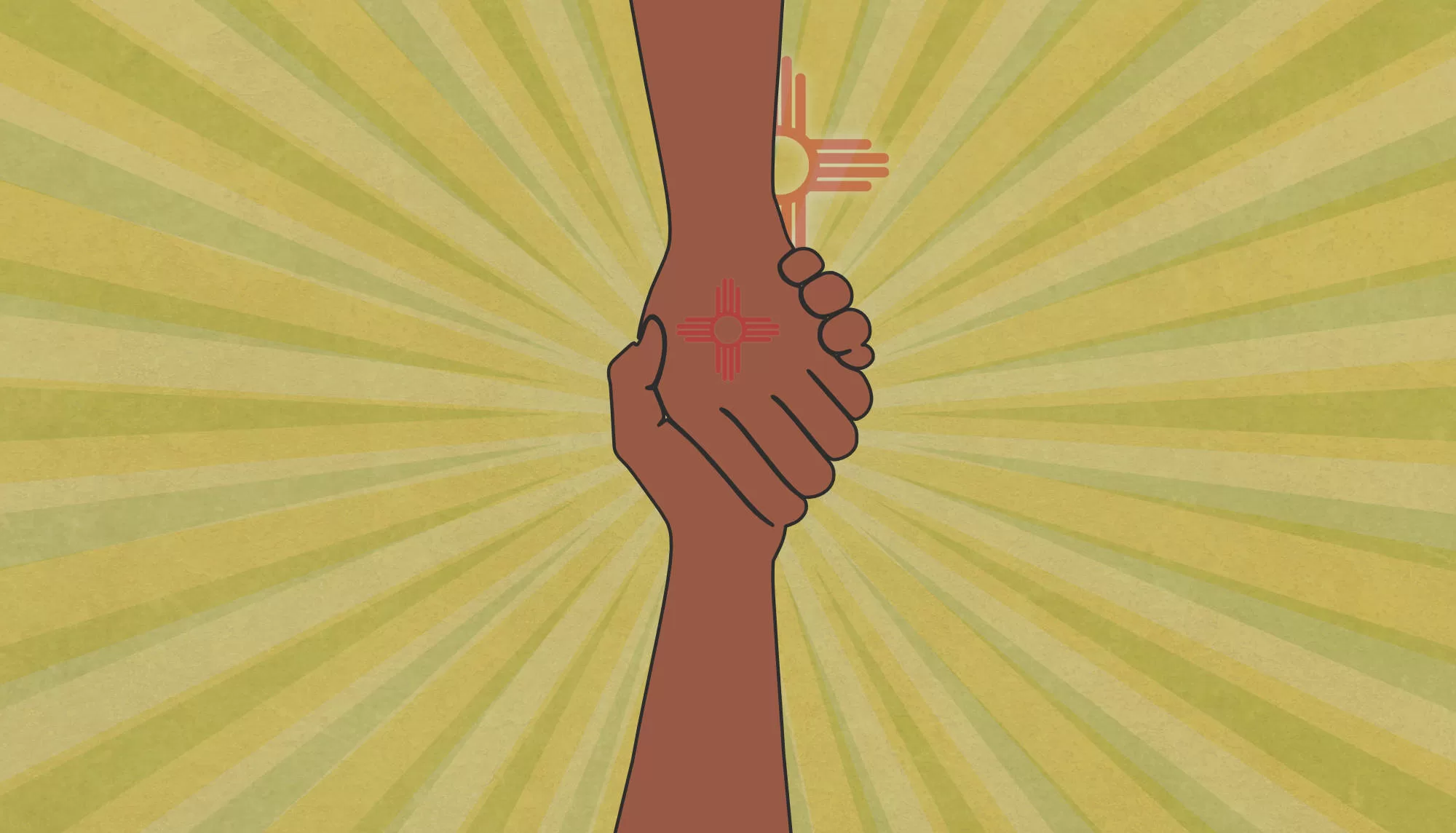Designing Schools to Teach, Heal and Help
The community schools model can increase academic achievement and help students and their families prevent adverse childhood experiences and treat trauma.
Eric entered high school with an adverse childhood experience (ACEs) survey score of 7, indicating he had endured seven forms of abuse and neglect in the home. Eric’s first trauma occurred at age two. Today, Eric is traumatized and easily triggered by loud talking by a teacher. He, like other students with ACEs, was not going to be able to easily concentrate on studies. Without help for Eric and his family, he would fall through cracks with C, D, and F grades, considered by some school staff as “a student who just didn’t try hard enough.”
What the Eric’s of New Mexico need is access to a school that can acknowledge his challenges and create a learning environment where he has a chance at success. The community school model is one that can transform an under-resourced school into a fully-resourced learning environment with all the services to address adverse childhood experiences, student trauma, and social adversity in the form of lack of access to vital services. The community school model, designed to improve academic achievement, has decades of research to support its implementation and many exist in New Mexico to learn from.
We know that students arrive at school with different challenges that can include growing up in homes where parents struggle due to lack of good paying jobs, substance use disorders, and untreated mental health challenges. The result can be child abuse and neglect leading to students traumatized and ill-equipped to focus on learning. Ignoring our student’s challenges is not the answer.
All the school reforms in the world won’t increase student achievement for our most vulnerable students unless we design a school with the resources to address the root causes of adverse childhood experiences (ACEs) and trauma. That type of school exists and it’s called a community school, fully-resourced to address both ACEs and social adversity.
The model
Community schools exist in New Mexico and showcase how it supports the entire school community–students, parents, educators, support staff, and all local youth development program staff. There are a number of models that guide the development and functioning of a community school. One model, promoted by the 100% New Mexico initiative is the 100% Community School, it has five components:
- A full-time community schools director
- A school-based health center with medical, dental, and mental health care
- Staff trained as navigators to link students and families to vital services
- Resourced with sustainable funding to be an academic and community activity center
- Students and families engaged in service learning and social engagement
We include school-based health care centers, offering medical and mental health care providers, in our 100% model because of epidemic rates of adverse childhood experiences among our student population. These health centers are designed to work in alignment with existing local providers so there’s no duplication of services.
How Community Schools are created
The model starts with a needs assessment, followed by a strategic plan that is community-based with involvement of all stakeholders. Sustainable funding formulas and partners are identified and the return on investment is clearly articulated. The entire school community works together to launch the model at the school.

To learn more about community schools, please download the book Community Schools@100% free of charge.
As the community schools remove barriers to vital services, the entire school community is empowered. Students get the support they need to achieve academically. Educators can focus on teaching and learning, while local providers meet health and safety needs. Local providers get a base within the community school from which to connect with students and family members, linking them to the services they can benefit from.
Community schools have an environment for family members, a one-stop service hub.
- A space for parent support, workshops, and networking
- An environment for the school community members to connect
- A place where easy to access family services exist
- Navigators who can link students and families to community services
Community schools acknowledge the digital divide and ensure access to the internet for:
- Web-based services
- Academic support
- Public health information
Community schools can also build partnerships with early childhood learning programs, acknowledging the seamless system of learning from early childhood to kindergarten through grade 12. Out of school mentorship programs are also sponsored by these well-resourced schools, linking the school to youth development programs. Community schools engage with local cultural, arts, civic, and professional organizations, as well as local health councils and coalitions. The goal is to create a network of engaged stakeholders invested in the success of the school and all students and their family members.
Community schools: Ensuring services for surviving and thriving
Community schools increase their capacity to serve students and families by strengthening partnerships with the organizations that provide the ten vital services for surviving and thriving that include health care, food security programs, housing security programs, youth mentorship, parent supports, and job training. Partnerships to create funding can come from the school district, city government, county government, state government, healthcare systems and the private sector. What is especially important is that in our rural areas, where funding can be scarce, we require strategies to ensure that every school that seeks to be a community school can acquire funding to be one. The 100% New Mexico action teams on community schools can be helpful here, building relationships with county commissioners, city councilors, and state lawmakers to identify secure funding streams to maintain current community schools and start up new ones.
Schools where 100% thrive: Return on Investment
The return on investment arrives in the form of successful students and self-sufficient families that feel a sense of empowerment and care within the community school. We can see, from decades of research focused on health equity and the social determinants of health, that by investing in vital services offered within a community school, we improve the academic achievement, health, safety, and job readiness of all students.
Mission: The 100% New Mexico initiative is dedicated to ensuring that 100% of families can access ten vital services crucial for their overall health, resilience, and success. This university-sponsored endeavor necessitates the local implementation of evidence-based strategies encompassing both community and school-based service hubs, aiming to prevent the most pressing and costly public health and safety challenges, including adverse social determinants of health and adverse childhood experiences.
Don’t miss a blog post! Get notified!
The 100% New Mexico initiative is a program of the Anna, Age Eight Institute at New Mexico State University, College of Agricultural, Consumer and Environmental Sciences, Cooperative Extension Service. Contact: annaageeight@nmsu.edu or visit annaageeight.nmsu.edu to learn more.




